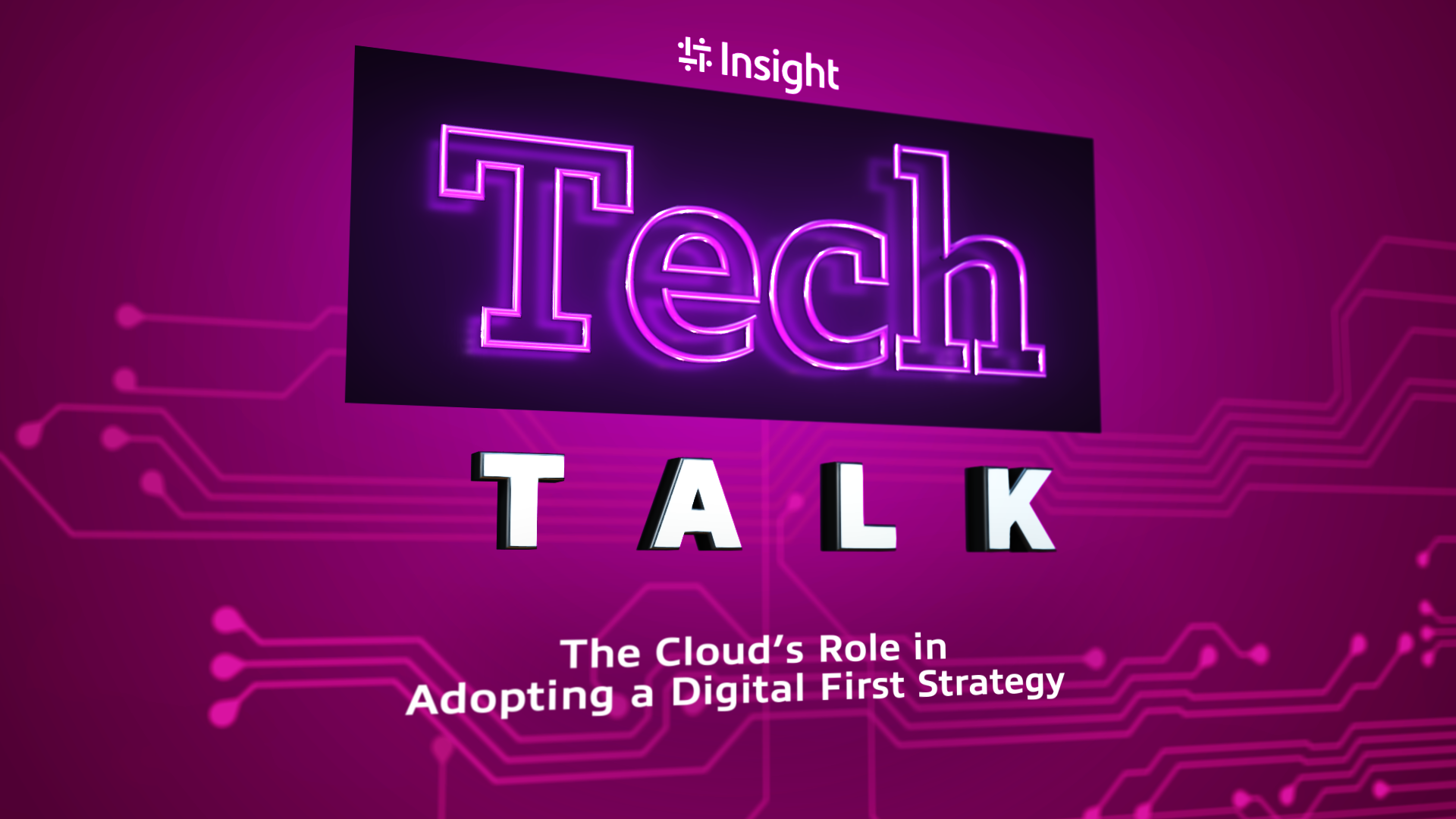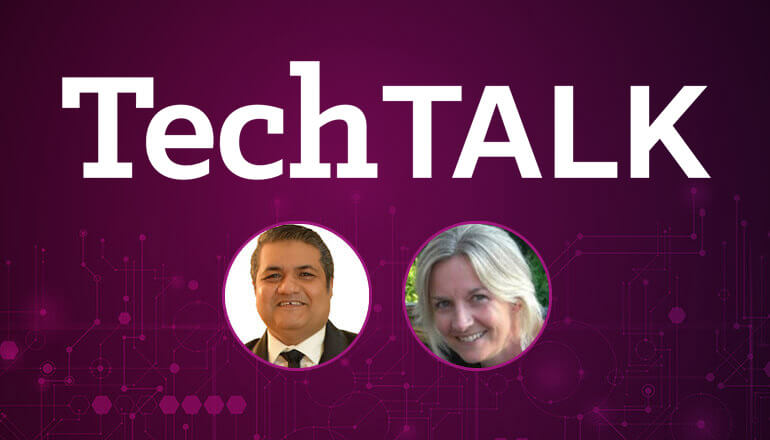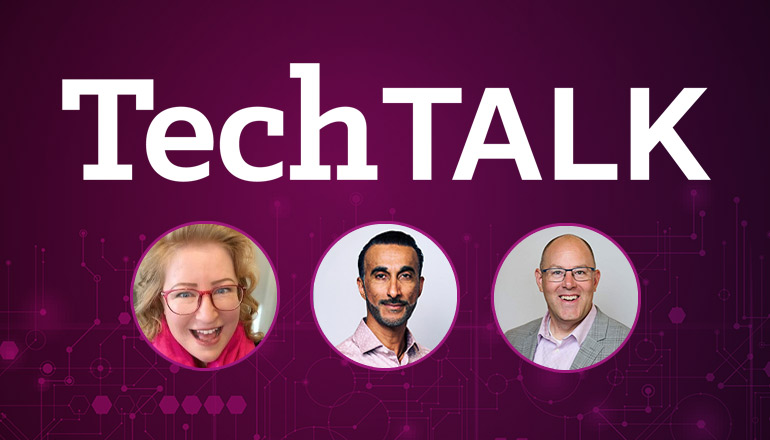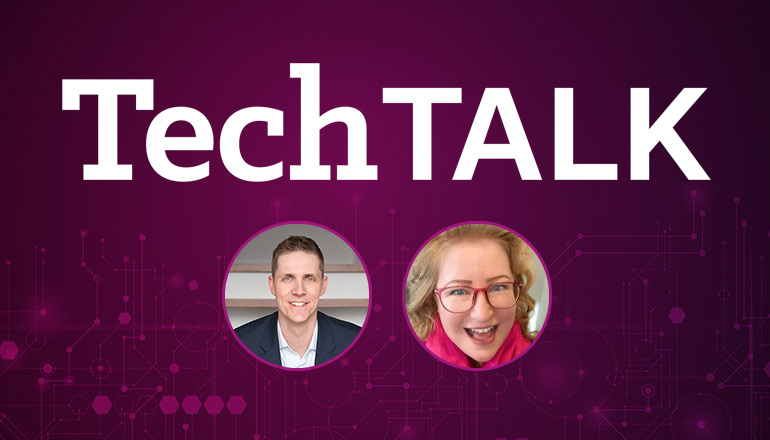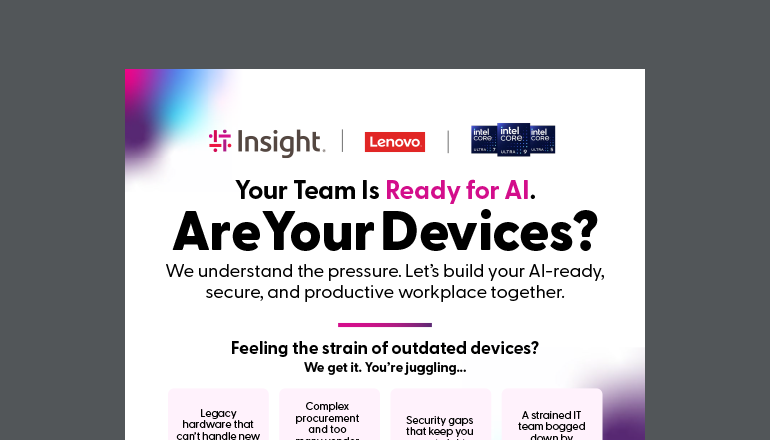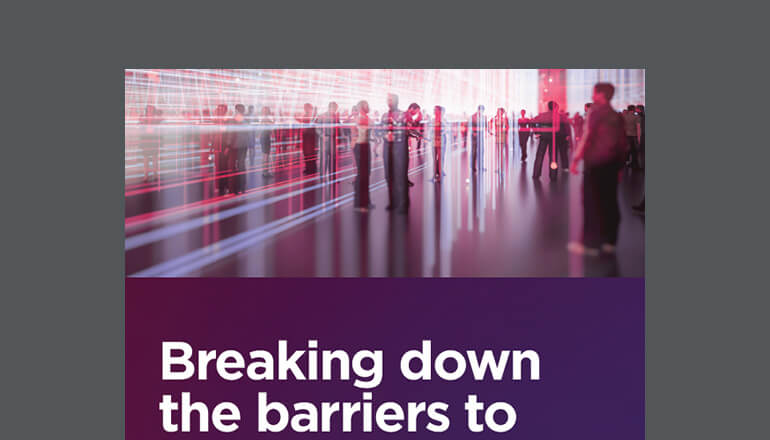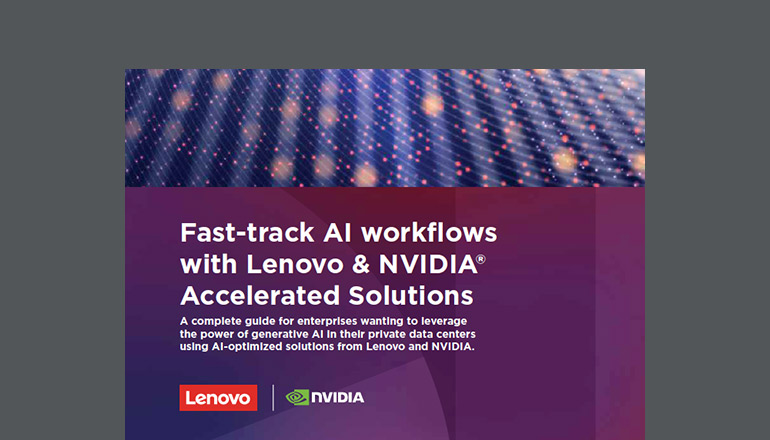Transcript of audio:
TechTalk | The Cloud’s Role in Adopting a Digital-First Strategy
with Phil Vokins, Intel Canada
[JOHN]
Hello, and welcome to Insight's TechTalk. My name is John Dathan and I have the pleasure to lead Insight Canada. TechTalk is our platform where we bring in industry expertise to talk to things that are relevant to our clients. Today, my guest I'm very pleased to say is Phil Vokins, who is the Director of Channels, ISV, and Cloud for Intel Canada. Welcome, Phil.
[PHIL]
Thanks, John. Great to be here today.
[JOHN]
Yeah, awesome to talk to you, and I really want to kind of poke at one area, because your title covers so many areas, but specifically today it's about Intel's view on the cloud. And we've seen so much over the last couple of years in terms of rapid adoption and accelerated adoption of cloud. I'd like to understand how and where does Intel influence the public cloud?
[PHIL]
Yeah, that's a big topic and also a great topic, a very topical one. Thanks, John. And it's interesting because we hear and sometimes, we get sucked in to talking about cloud as a strategy and we hear about people talking about cloud as a strategy, but I think customers really want to see it as an enabler, because nobody has compute or storage as a strategy, but what they do have is those things as a business technology enabler. So I think we need to focus on that first. And what we're seeing across Canada and across the world is many customers really adopting a digital first strategy. And if we're going in that direction, then I think we really want to ask about how can cloud really help us get there. So to get to your question, how does cloud enable that and what's Intel's view on it, well, cloud clearly has the advantages of agility and flexibility. We can do things way quicker than we ever could in an on-premise data center. And from an Intel perspective, all we're trying to do is make sure that customers can take advantage of the compute and performance that they've always enjoyed on-premise, irrespective of where their applications or their workloads are running.
[JOHN]
You know, it's interesting your point about digital first. I've often heard clients talk about we have a cloud first strategy, and I kind of question that, as to why wouldn't you have a where it makes most sense strategy? I mean, you and I know that there's the public cloud, but there's also the edge, which is going to be a massive part of this whole formula because we can't bring everything back to a centralized cloud.
[PHIL]
Yeah, and you should really think about your cloud strategy in terms of your data strategy. What are you trying to do with data? How does it enable your business? And the edge is a great point. More and more data is being produced at the edge, and in fact needs to be processed at the edge because sometimes the economics of moving all that to the cloud, don't make sense. Maybe the network bandwidth or the costs are not appropriate for that to happen, but also, you've got latency issues. I have seen studies which suggest that by 2030, that 90% of data is produced and processed at the edge, which doesn't diminish the role of the cloud data center. It just means that to your point, I think you're processing and you're consuming, processing, consuming, and acting on your data wherever the most appropriate location is. Not in one specific bucket somewhere.
[JOHN]
Yeah, and you've got the economics and the physics, really, of bringing it all back. And we've done a number of projects together. Intel's got a lot of strength at the edge, so I guess it's a hot topic for both of us.
[PHIL]
Yeah, we've been very pleased to enable Insight there as a lead partner in Canada. Thanks for that opportunity, John.
[JOHN]
So maybe another area that, and I think part of this is what's accelerating the cloud adoption, and that's the scarcity, right? The scarcity of skills. We're sort of past some of the issues around scarcity of supply, but there's still the skills gap, and how do you feel the cloud is solving that for clients?
[PHIL]
Yeah, that's a great point. I did see another survey actually from a highly reputable research organization just last month which said that for 40% of Canadian IT organizations, this is actually their number one priority. How do they address this? And I think you need to think, customers really need to think about where do they need the people. It's bit like where do they need their data? So if for example, they are embarking on a rather difficult and complex transformation project, then hiring that person may not be the easiest thing to do. And even if you can hire that person, kind of beware because the type of employee who is turned on by those projects may not want to stay in the long term if the excitement or those kind of new transformation project area dries up. So this is really an area where typically consulting services might be engaged. Or indeed, John, solutions integration services such as your own.
[JOHN]
It's very valid. We talk about it a lot internally. We offer, as you well know, consulting services and manage services, and the folks that are really strong for day one, sort of the creation of things, are rarely the people for day two. So to your point, if you're hiring somebody that has the architecture skills or whatever to build the environment for day one and then all of a sudden you ask them to be a day two person, it's going to be very hard to retain that skillset.
[PHIL]
Yeah, and it's going to be costly and it's going to be painful for sure.
[JOHN]
So the other thing that we talked about a little bit when we were preparing for this, and I was fascinated, is your opinion and view on kind of the open source as almost a defense against lock-in, and you had some really interesting comments here.
[PHIL]
Yeah, and I think the same thing really applies whether you're living in a cloud world or an on-premise world. Customers through the last decades have often been hurt or hamstringed or constrained by vendor lock-in, and I think this new world of agility has given us a great opportunity to move away from that, along with parallel movements such as open source, of which Intel is a very keen sponsor, because from our own selfish perspective, we want customers to be able to consume, compute as easily as they can, and why wouldn't we? So for example, in a cloud world, where is open source prevalence? Well, the most obvious one from an applications development perspective and deployment would be microservices. Everyone's talking about these or containers or Kubernetes as a real-world embodiment of that. And this is where we would strongly advise customers to just be wary of not getting locked into an open-source environment. And that might sound kind of paradoxical, but it can happen. So, cloud service providers will have their own flavors of Kubernetes, as indeed they should because you don't want to be using it raw from the open-source community. You want some sort of support with it. But there are also independent vendors such as Red Hat and VMware, strong partners of ours and yours, John. Who will also help people with supported distributions for microservices and Kubernetes, which may or may not be but in theory could be more portable for them. And if we're talking about cloud as a vehicle and an opportunity to gain agility and flexibility, then customers also want their own deployment strategies to be as portable as possible because where they're hosting these things can change week to week, month to month, year to year. And so, it's important not to get locked into one supplier in a new world, just as you didn't want to in the old world.
[JOHN]
I think that's really well said. You know, you're sort of saying if you want to move to an agile environment, don't paint yourself into a corner in that environment, right?
[PHIL]
Absolutely,
[JOHN]
Which so many clients today are talking about multi-cloud, right? Because of that very point. They want the flexibility to move the application where it makes sense, and one provider might have a stronger set of offerings. And if you've painted yourselves into that locked-in area, then that becomes just as difficult to do as the initial transformation does.
[PHIL]
Yeah, quite. I mean, I see it from a customer point of view is almost creating a marketplace for your services. Now, the customer has real power in this world and should obviously in its own interests do as much as it can to retain that commercial power and not be subservient to any particular organization going forward.
[JOHN]
Well this, to me, it's a fascinating discussion because, I mean, I think so many people think of Intel as the CPU machine that you are, and the fact that you're embracing the public cloud and what that means and the role that you play in it, because you really do now have technology that runs from one end of the cloud to the other, correct?
[PHIL]
Yeah, exactly. And we are, and I say for our own kind of commercial survival and growth going forward, we've adapted to this new world, just as you have at Insight, John, to make sure that our services and our products and what we can do is as relevant in the public cloud as it is on-premise or in the PC, which hopefully many of you are watching this from right now.
[JOHN]
Yeah, exactly. Well, I think maybe we're both demonstrating that whole concept of meeting clients where they are, right?
[PHIL]
Exactly.
[JOHN]
The technologies you're developing, the services that we're providing, and the combination of the two, it's really helping clients along that journey.
[PHIL]
Yeah, it's a really exciting place to be. And if I can give that plug for you, John, because I think you've always been a kind of a great partner of ours, that as we enter that kind of exciting world and it doesn't look like it's going to slow down, we're delighted to partner with organizations such as yourself, which can really help our customers adopt that compute and build strength too.
[JOHN]
Well, thank you, and thank you for your partnership as well. And thank you for joining me today. These 10-minute sessions go really fast, but hopefully, folks, you've got a little bit more knowledge and understanding of the role that Intel plays in the public cloud, and as well as how Insight can help you on that journey. Thanks for joining.
[PHIL]
Anytime, I look forward to the next one, John.

